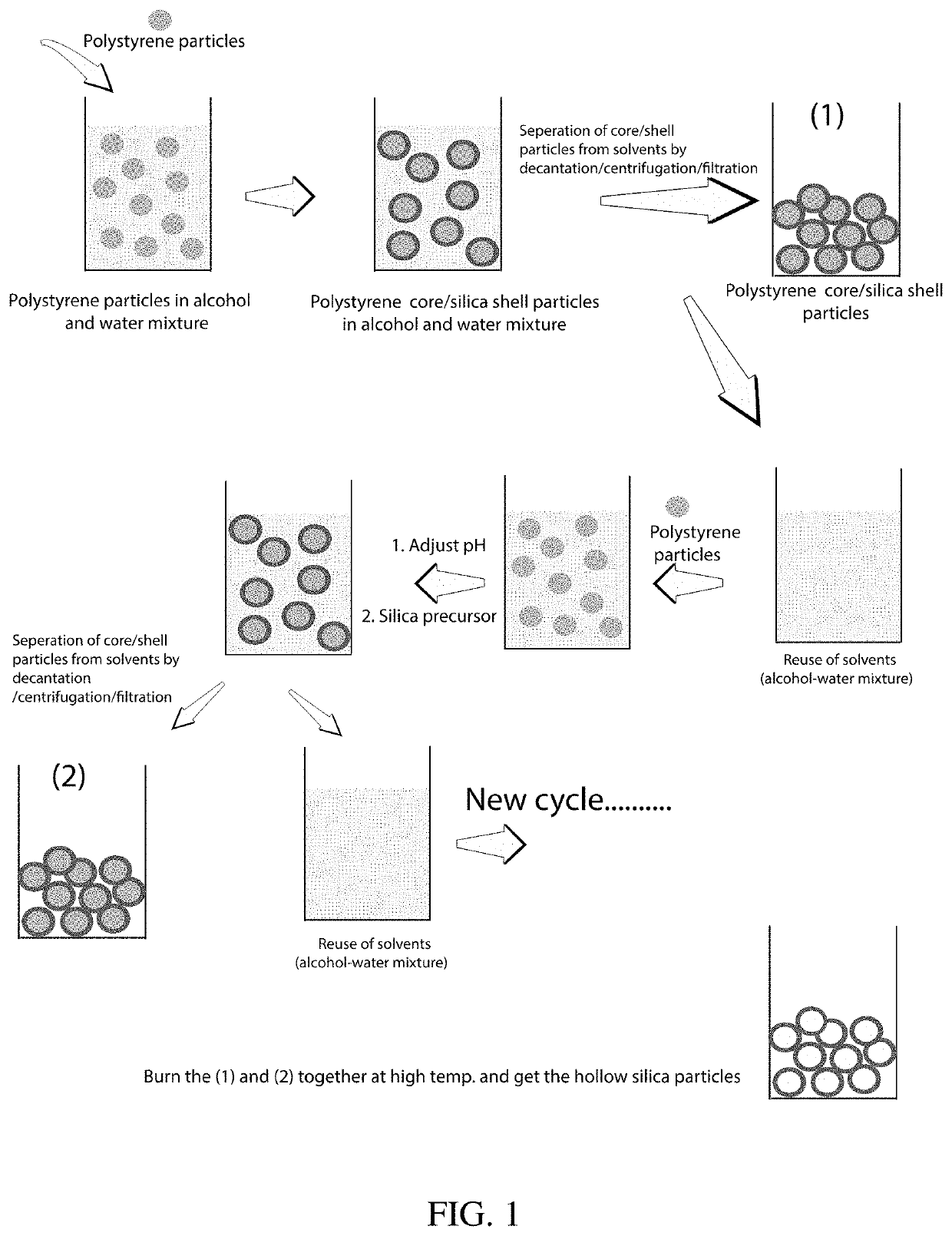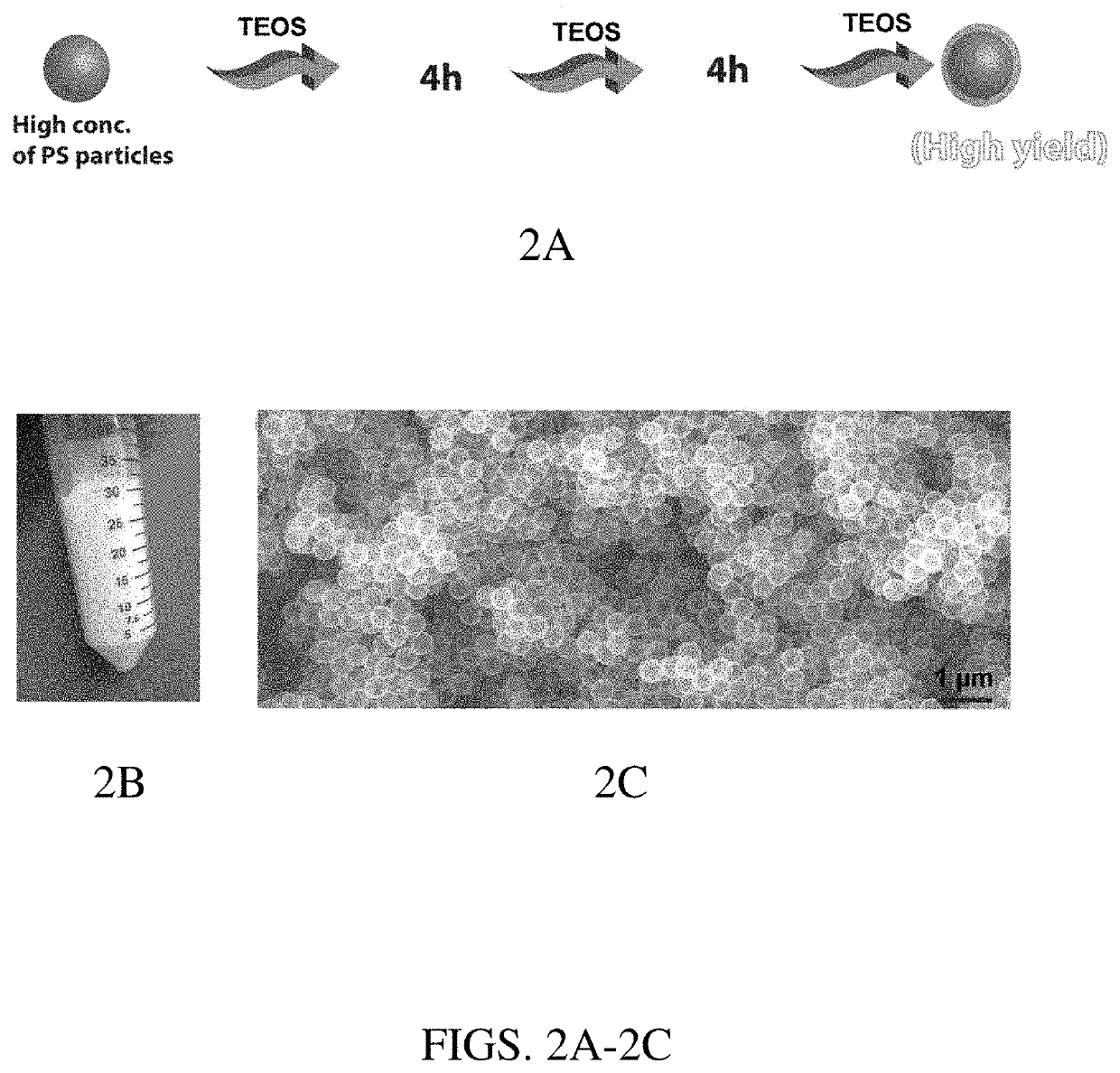Methods for producing hollow silica particles
- Summary
- Abstract
- Description
- Claims
- Application Information
AI Technical Summary
Benefits of technology
Problems solved by technology
Method used
Image
Examples
examples
[0033]Production of Hollow Silica Particles
[0034]The following described process resulted in very high yields (ca. 25 times the reported methods) of hollow silica particles with minimal wastage of solvents, resulting in low cost. The cost of hollow silica particles was reduced in this work by two approaches: (1) by increasing the synthesis yield for the amount of solvent used, and (2) by recycling the solvents. The PS particles were synthesized by modifying previously reported methods (e.g., P. C. Thapliyal et al., J. Materials, Article ID 127049, 2014).
[0035]For hollow silica particle synthesis, in a typical experiment, 5.33 g of 300 nm PS particles was added into a solution having 100 mL of isopropanol, 25 mL water, and ammonium hydroxide (28-30%; to make a solution with pH≈11). Then the reaction mixture was stirred for about 10 minutes. In the second step, a total of 4.25 mL of tetraethyl orthosilicate (TEOS) was added in three aliquots of 1.42 mL each, separated by 4 hours, whil...
PUM
 Login to View More
Login to View More Abstract
Description
Claims
Application Information
 Login to View More
Login to View More - R&D
- Intellectual Property
- Life Sciences
- Materials
- Tech Scout
- Unparalleled Data Quality
- Higher Quality Content
- 60% Fewer Hallucinations
Browse by: Latest US Patents, China's latest patents, Technical Efficacy Thesaurus, Application Domain, Technology Topic, Popular Technical Reports.
© 2025 PatSnap. All rights reserved.Legal|Privacy policy|Modern Slavery Act Transparency Statement|Sitemap|About US| Contact US: help@patsnap.com



